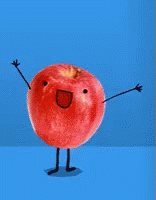

To keep the background steady while looping, Motion Stills has to separate the background from the rest of the scene. As an added benefit, this fixes "pocket shots" (footage of the phone being put back into the pocket) Our approach identifies optimal start and end points, and also discards blurry frames. Short videos are perfect for creating loops, so we added loop optimization to bring out the best in your captures. We obtain further speedup and conserve storage by computing low-resolution warp textures to perform real-time GPU rendering, just like in a videogame. We achieved a 40x speedup by using techniques such as temporal subsampling, decoupling of motion parameters, and using Google Research’s custom linear solver, GLOP. Our challenge was to take technology designed to run distributed in a data center and shrink it down to run even faster on your mobile phone. Our algorithm uses linear programming to compute a virtual camera path that is optimized to recast videos and bursts as if they were filmed using stabilization equipment, yielding a still background or creating cinematic pans to remove shakiness. We pioneered this technology by stabilizing hundreds of millions of videos and creating GIF animations from photo bursts. How does Google manipulate your original Live Photo and turn it into that? Here's how the blog post explains it: Motion Stills uses its own video stabilization algorithms to take what might otherwise be a shaky Live Photo and turn it into a smooth GIF that you'll actually want to see repeat. It's called Motion Stills, which is a little awkward and contradictory but also a great counter to "Live Photos." Google's approach, developed within the company's research lab, is actually way cooler than a basic Live Photos to GIF converter. Until today, I'd been using an app called Lively to handle that flow, but Google just released its own app that does exactly the same thing. That's why I still go the GIF route even now. Then it would get backed up to Google Photos as a GIF, which is something you can share far beyond Apple's ecosystem. Google didn't support the format until March, so if I wanted to preserve them before then, it required converting each Live Photo to a GIF using a third-party app, saving it to my phone's gallery again, and deleting the original.
Apple live photo to gif plus#
My entire picture library is inside Google Photos, which for a long time made Apple's Live Photos feature on my iPhone 6S Plus rather useless.


 0 kommentar(er)
0 kommentar(er)
